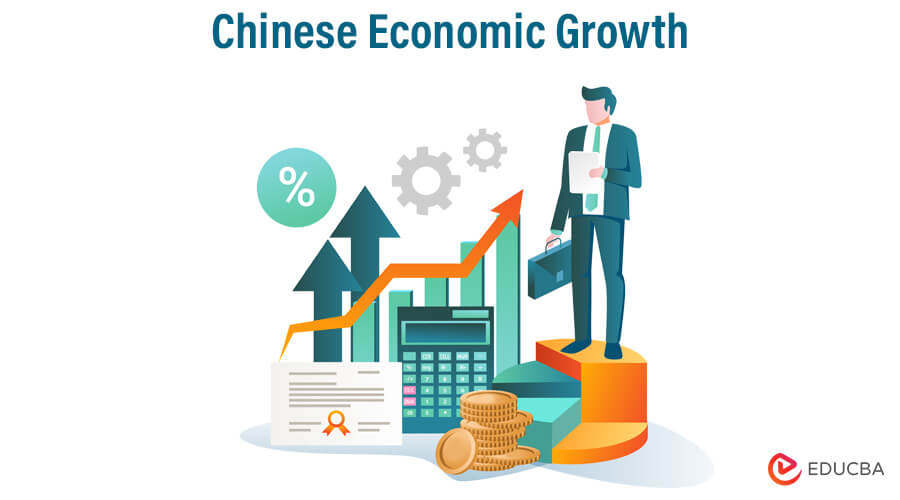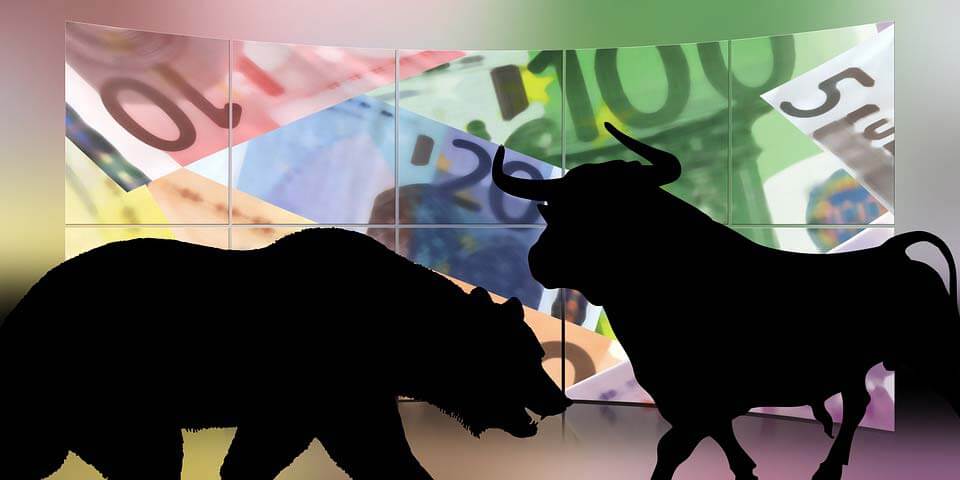Updated May 6, 2023
Introduction to Chinese Economic Growth
The following are the top ten economies in the world. China’s economy is the 2nd largest economy globally, indicating the tremendous Chinese economic growth in recent years.
- The United States Of America
- China
- Japan
- Germany
- France
- United Kingdom
- Brazil
- Italy
- Russia
- India
There you have China in the second position. Coming back to the 2nd largest economy of the globe Chinese economic system has a huge role to play in the global economy; however, the world has been stunned by the Chinese economic growth over the years, without a serious downfall or a recession to face China continues to grow well and attain huge hikes.
Chinese Economic Growth was never an economic superpower; it suddenly emerged in 1978 by demonstrating a 30-fold expansion of real GDP. The world did not expect China to show sudden economic growth because it faced national system problems like persistent backwardness after centuries of commotion and economic degeneration. However, China fared well thanks to its permanent extractive and dictatorial political organizations. Yet the institutional theories predicted China would fail in dismissing Chinese Economic growth industrialization.
Chinese Economic Growth Industrial Revolution
Industrialization was introduced in the book “The Wealth of Nations” approximately 250 years back by Adam Smith. Economic historian Gregory Clark mentions, “Explaining the Industrial Revolution is the ultimate, elusive prize in economic history. It is a prize that has inspired generations of scholars to lifetimes of, so far, fruitless pursuit.” China proved the economist and the world wrong; they very tactfully and knowledgeably rediscovered a secret recipe for growth to industrialization.
The rediscovery was so naturally unpredicted, brisk, and prominent that the economist’s facts predicted industrialization seemed lost. Yes, China proved the world wrong, besides the delay of industrialization in China by 200 odd years. Besides various barriers, China, as a developing economy, could attain it, whereas other emerging economies could be nowhere near China.
To the world’s surprise, China completed the 1st part of industrialization, or the Industrial Revolution, in its 1st 15 to 20 years. This took place after the restructuring in the year 1978. China’s second industrial revolution has come midway, and until a few months back, there was no recession. Yet the prediction of China’s recession started approximately 4 years back.
Recommended courses
Reason Behind the Recession Prediction
China has attained a 10% growth average in all domains for the last 3 decades. Economists say that the bigger the economy, the harder it is to maintain the same level. Any economy functions on three major elements of labor (the age group of people engaged in the working-age group, which mean this element does not include children and senior citizens), capital (the working capital), and productivity (labour X capital). When these factors increase, the economy faces a huge increase; simultaneously, a decrease in these elements causes a dip in the economy. China’s working age, that is, the labor population, peaked in 2012. In 2012, China’s investments and GDP reached their maximum hike of 49%; many economies have reached that hike sometime over the years.
Well, the prediction did come true. Since 2013, Chinese economic growth has been facing a few turmoils in the smooth running of its economy due to changes in the fiscal rules that made it hard for the government to spend. For example, the inflation of consumer price goods is running at a five-year low at 1.1%. In contrast, the consumer price of goods has been in deflation. It must be noted that China’s government controls its economy and has been running below its potential. This had never affected the Chinese market from 2013 till June 2015. The best part about this outstanding economy is that none of its economic slowdowns has been permanent.
The Chinese economy has faced a continuous slowdown since the year 2010, from 9.8% in the year 2010 in the year to 7.8% in the year 2012, 7.7% in the year 2013, 7.4% in the year 2014, and 7.3% in the year 2015. Before the dip started, China attained a constant hike of approximately 10.5%; since the slowdown of the Chinese economic growth, the economist predicted a huge, huge crash down; however, China never let the slowdown last long enough. It always managed to fight back to attain decent growth every year until June 2015.
June 2015
The Chinese economic growth Post-2014 Chinese market saw an incredible hike in 12 months, a more than 150% boom. The sudden hike resulted from regulations set by the government; for example, new laws of liberalization made the investment of funds increase and for the companies to make the stocks available for the public or the buyers of stocks. Chinese stock market comprises a majority of buyers as small retail investors. People started investing more in stocks and properties as even the banks started lending more money for property purchases. The last six months of 2014 listed the maximum number of new businesses in China.
The drastic change in mid-June 2015 occurred due to the Chinese government’s headstone changes, not elementary ones. Stocks were highly overvalued. Overvalued stocks fetch much money, and highly overvalued stocks fetch more than a lot of money. This is what happened. People wanted to make lots of money, so they started withdrawing their stocks from the market. Companies suspended their own stocks. The reason is marginal lending from the banks to both retail and corporate investors. An investor has borrowed money from the banks to purchase stocks; corporate have pledged their own stocks to the bank to invest money in the market.
To control the economy’s slowdown, the government issued a few regulations that curbed new share issues to encourage brokers and fund managers to buy more and more stocks from the market. The analyst and economists say that the Chinese government faces its own clout, which is quite true.
After all the boom, it was now the time of correction in the stocks’ haphazard increasing values. All this started Mid June 2015; on the 19th of June, 2015 Friday, the main Chinese stock market crashed down by 13.3%, which was the highest decline since the global financial crisis or global economic crisis. Approximately 9.24tn Yuan (the Chinese currency) was wiped away from the market. The decline continued for weeks and stressed the Chinese stock market and its government.
The Chinese government lost close to 3 trillion Yuan in its main stock market in less than a month. This was the worst fall the Chinese stock market experienced in the last 8 years. A list of suspensions is 2/3 of the companies listed on the Chinese mainland or approximately 1800 stocks. You can count it either way, losing 10% of their values and maximum daily limits. The demand for Chinese raw materials fading away knocks down the world commodity prices; copper will drop for 6 years.
Recession Effects on the Global Economy
The Chinese government not only tried to control the falling market but also to control the boom. However, both were not possible. If the authorities cannot control the stock market’s incorrect boom, they definitely cannot control a sharp fall. However, the Chinese government tried to stabilize the dripping conditions, which stabilized the economy by minimizing the recession by July 2015.
Every country plays a vital part in the global economy, and so does China, with a very important position, i.e., being second, in the global economy. It accounts for only 15% of the total global GDP. As far as the developed or the emerged countries or economies are concerned, the recession of the Chinese economy will not have a very huge or very big impact on them. On the other hand, emerging economies like most of Asian economies, and African countries, to the most extent, will be affected.
A huge recession from mid-June 2015 till August erased approximately $5 trillion from the global market. A deep dip in the Chinese economy affected the other closely related economies. The emerging South African countries saw an all-time steep dip in the oil and crude, and 22 other different commodities have also been sinking as they have been at their lowest price since 1999.
Since the 11th of August, Yuan has been sharply devalued, deleting $5 trillion from the global market. China’s industrial activities have slowed sharply as the Chinese government cannot stabilize the equity prices. Hence the emerging countries that depend on China for their economic growth to meet their demand for industrial and other products will be affected by this sudden dip in the Chinese market and the great devaluation of the Yuan.
The globe will face its first ROI (Rate of Interest) rise. The reason behind this ROI rise is that The United States Of America has tightened its monetary conditions for huger emerging economies with the rising rate of the dollar, which means that the emerging countries are going to have to face a huge interest rate along with the rising rate of the dollar. This rise started in September 2015. This means that the recession global economy is on the verge of facing a big, very big change. In this change, the rich, the developed economies, only normalize their policies, whereas China and other emerging economies try to stabilize their economic conditions.
Yet the effect of this huge drop-down remains minimal, not only for the world but also for China. Even after having trillions washed away from the global money, China and the globe can resettle the same. Talking about China, the Chinese, neither most of the common Chinese people nor corporates own huge investments in the stock market. They have most of their investments in real estate. Hence, a huge dip in the stock market has only affected the Chinese government and its economy directly and not the common man. Of course, it affects their living but not directly.
As far as the rich economies are concerned, they make the most out of such situations to boost their own economies by increasing their ROI and making money and strengthening their economy. In addition, leaving the emerging ones behind struggling with the hike in the ROI and overvalued commodities. It is observed that during the Asian crises, the American government increased its ROI by approximately 75 basis points, which is a lot of money.
Image source: pixabay.comConclusion
Chinese Economic growth has been a surprise player in the market. It came out of nowhere to the second level in the world. With a prediction of a drop-down in the economy, China has continued to fight and stay strong for the last three decades. However, the slowdown started, it reached its final and lowest point in the months of June, July, and August 2015, wiping away 5 trillion from the global market. It has left the world affected in both positive and negative ways. Positive for the rich economy, as they hike their ROI during Asian crises. Whereas negative to the emerging economies, as the prices of basic commodities crash to their lowest points since 1999. The Chinese government has been in a panic situation and is trying to stabilize its economy by introducing various laws, rules, and regulations to correct and regain what is lost by them.
Recommended Articles
This has been a guide to Chinese Economic growth. Here we discuss how does china’s growth rise and about his chinese economic history. You may also look at the following articles to learn more –





